
Bunsen burners are essential in chemistry, and an adjustable air aperture on the side allows different temperatures.
List of German inventors and discoverers
This is a list of German inventors and discoverers. The following list comprises people from Germany or German-speaking Europe, and also people of predominantly German heritage, in alphabetical order of the surname.
A
Manfred Baron von Ardenne (German pronunciation: [ˈmanfʁeːt fɔn aʁˈdɛn]; 20 January 1907 – 26 May 1997) was a German researcher and applied physicist and inventor. He took out approximately 600 patents in fields including electron microscopy, medical technology, nuclear technology, plasma physics, and radio and television technology. From 1928 to 1945, he directed his private research laboratory Forschungslaboratorium für Elektronenphysik. For ten years after the World War II, Ardenne was one of the many captured German nuclear physicists put into the Soviet program of nuclear weapons, and was honored with the Stalin Prize by the Soviet Union.
Upon his return to the then Germany, he started another private engineering firm, Forschungsinstitut Manfred von Ardenne. Ardenne is seen as one of the main inventors of television.
- Ernst Abbe: Invented the first refractometer, and many other devices. Donated his shares in the company Carl Zeiss to form Carl-Zeiss-Stiftung, still in existence today.
- Franz Carl Achard: Developed a process to produce sugar from sugar beet. Built the first factory for the process in 1802.
- Konrad Adenauer: Invented soya sausage (1916; “Kölner Wurst”)[1] and, together with Jean and Josef Oebel, [coarse] wholemeal bread (1917; Kölner Brot).[2]
- Georgius Agricola: Named “the father of mineralogy”.
- Wilhelm Albert: Invented the wire rope 1834.

Brooklyn Bridge, with wire rope cables in a sheath, built by Washington and Augustus Roebling of Germany/Pennsylvania

- Kurt Alder: Discovery of the Diels “Alder reaction, Nobel Prize in Chemistry 1950.
- Richard Altmann: Discovery of the Mitochondrion
- Alois Alzheimer: Psychiatrist who discovered Alzheimer´s disease, a degeneration of the brain in old age.
- Ottomar Anschütz: in 1883 he patented a camera with an internal roller blind shutter mechanism, just in front of the photographic plate. Thus the focal-plane shutter in modern recognizable form was born.
- Hermann Anschütz-Kaempfe: Invented the gyrocompass in 1907.
- Manfred von Ardenne: Self-taught researcher, applied physicist and inventor. 600 patents in fields including television and radio, electron microscopy, medical technology, nuclear technology, and plasma physics.
- Friedrich Wilhelm August Argelander: catalogued all stars brighter than approximately magnitude 9.5 and north of -2 degrees in the Bonner Durchmusterung, the first large-scale modern star catalogue.
- Leo Arons: Mercury-vapor lamp together with Peter Cooper Hewitt.
- Leopold Auerbach: Discovery of Plexus myentericus Auerbachi, or Auerbach’s plexus.
B
- Walter Baade: astronomer. With Fritz Zwicky, he identified supernovae as a new category of astronomical objects
- Karl Ernst von Baer: discovered mammal ovum.
- Ralph Baer: Inventor of the first home video game console.
- Adolf von Baeyer: Chemist. Synthesized indigo, discovered the phthalein dyes, and investigated polyacetylenes, oxonium salts, nitroso compounds (1869) and uric acid derivatives (1860 and onwards) including the discovery of barbituric acid (1864). Nobel laureate 1905.
- Heinrich Band: Developed a musical instrument and called it bandoneà³n in 1846. It is used in most tango orchestras until today.
- Heinrich Barkhausen: Discovered what is now called the Barkhausen effect, to describe the phenomenon, which is caused by rapid changes of size of magnetic domains in 1919, and Barkhausen stability criterion.
- Oskar Barnack: The father of the first mass marketed 35mm camera and Leica.
- Heinrich Anton de Bary: Father of Phytopathology, the science of plant diseases and modern Mycology. Coined the word symbiosis in 1879.
- Karl Adolph von Basedow: Discovery and description of Graves-Basedow disease
- Andreas Friedrich Bauer: first functional steam-powered printing press with his colleague Friedrich Koenig)
- Wilhelm Bauer: Inventor and engineer, who built several hand-powered submarines.
- Eugen Baumann: He was one of the first people to create polyvinyl chloride (PVC), and, together with Carl Schotten, he discovered the Schotten-Baumann reaction.
- Carl Baunscheidt: Inventor of the Lebenswecker (“life awakener”) or “artificial leech”.
- Hans Beck: Inventor of the toy Playmobil.
- Georg Bednorz: Physicist, discovered high-temperature superconductivity in ceramics, shared the 1987 Nobel Prize in Physics.
- Martin Behaim: Inventor of the first globe of the world (Erdapfel) between 1491 and 1493.
- Alexander Behm: Inventor of echo sounding. The patent was granted in 1913.
- Fabian Gottlieb von Bellingshausen: Navigator and Explorer. Discovered the land mass of Antarctica on January 28, 1820.

- Friedrich Bessel: astronomer; he is credited with being the first to use parallax in calculating the distance to a star.
- Emil Adolf von Behring: Discovered the diphtheria antitoxin. It was the world’s first cure for a disease (1891).[3] He was awarded history’s first Nobel Prize in Physiology of Medicine in 1901.
- Melitta Bentz: Inventor of the coffee filter, 1908.

- Karl Benz: Father and inventor of the gasoline-powered automobile, 1885, and pioneering founder of automobile manufacturing.
The Führer had a 12-cylinder Mercedes

- Albrecht Berblinger: Inventor of the spring prosthesis and hang-glider (1811).[a]
- Hans Berger: a German neurologist, best known as the inventor of electroencephalography (EEG) (the recording of “brain waves”) in 1924, coining the name, and the discoverer of the alpha wave rhythm known as “Berger’s wave”
- Albert Betz: Betz’s law, 1913
- Friedrich Bessel: astronom, he is credited with being the first to use parallax in calculating the distance to a star.
- Heinz Billing: Computer scientist. He invented the magnetic drum memory and built prototype laser interferometric gravitational wave detector in Garching, Munich.
- Gerd Binnig: Physicist. Design of the scanning tunneling microscope (STM) with Heinrich Rohrer. Nobel laureate 1986.
- Ludwig Blattner: developed the Blattnerphone, the first magnetic tape recorder (using steel tape) whilst working in Britain in the late 1920s.[4]
- Walter Bock: Styrene-butadiene
- Max Bockmühl: He developed Methadone together with German Gustav Ehrhart in 1937 in Germany, working for I.G. Farbenindustrie AG at the Farbwerke Hoechst
- Johann Elert Bode: Discovered the Titus-Bode Law
- Ludwig Bölkow: Aeronautical pioneer. Was instrumental in the development of the Me 262, developed a new rotorhead concept for helicopters.
- Max Born: Physicist and mathematician. Groundbreaking work in quantum mechanics. Nobel laureate 1954 with Walther Bothe. His Ph.D. student Delbrück, and six of his assistants (Fermi, Heisenberg, Goeppert-Mayer, Herzberg, Pauli, Wigner) went on to win Nobel Prizes. His Ph.D. student J. Robert Oppenheimer led the project to develop the atomic bomb.
- Manfred Börner: Physicist. Developed the first working fiber-optical data transmission system in 1965. Received a patent for an “electro-optical transmission system utilizing lasers”.
- Carl Bosch: Chemist and Nobel laureate, discovered the processes of industrial high pressure chemistry.
- Robert Bosch: He invented, engineered and launched various innovations for the motor vehicle.
- Walther Bothe: Nuclear physicist, who shared the Nobel Prize in Physics in 1954 with Max Born.
- Johann Friedrich Böttger: He was generally acknowledged as the inventor of European porcelain although more recent sources ascribe this to Ehrenfried Walther von Tschirnhaus. Böttger is still credited with developing the manufacture of porcelain in Europe.

- Theodor Boveri: described Centrosome.
- Karlheinz Brandenburg: Inventor and audio engineer; father of audio compression format MPEG Audio Layer 3, more commonly known as MP3.
- Karl Ferdinand Braun: Inventor of the CRT oscilloscope in 1897
- Wernher von Braun: The preeminent rocket engineer of the 20th century. Developed the V-2 rocket for Germany. Built Saturn V rocket in USA which put man on the moon.
- Korbinian Brodmann: neurologist, Brodmann area in brain
- Walter Bruch: PAL, colour encoding system for analogue television
- Friedrich Wilhelm Gustav Bruhn: inventor of Taximeter
- Ernst Büchner: Chemist and inventor of Büchner flask and Büchner funnel.
- Robert Bunsen: Chemist who developed the Bunsen burner, and with Gustav Kirchhoff he discovered caesium (1860) and rubidium (1861).

- Wilhelm Busch: Caricaturist, painter and poet; father of comics.
- Christian Friedrich Ludwig Buschmann: Pioneer and promoter of the harmonica.

- Adolf Busemann: Discovered the effect of swept wing for modern aircraft in 1935.
- Adolf Butenandt: Discovered primary female sex hormones. Shared the Nobel Prize in Chemistry with Leopold Ruzicka in 1939.
C
- Ernst Boris Chain: biochemist, co-recipient of the Nobel Prize for Physiology or Medicine for his work on penicillin (together with Fleming).
- Carl von Clausewitz: The father of modern military theory.
- Justus Claproth: Jurist and inventor of recyclable paper and deinking.
- Nicolaus Copernicus: Astronomer, formulated a heliocentric model of the universe which placed the Sun, rather than the Earth, at the centre.
- Manfred Curry: German American yachtsman, developed the cam cleat used on sailboats to easily and quickly secure a rope, discoverer of the phenomenon of “geomagnetic lines” called the Curry Grid.
D

- Gottlieb Daimler: Invented the first high-speed internal combustion petrol engine and the first four-wheel automobile, also the first internal combustion motorcycle, the Reitwagen.
- Adolf “Adi” Dassler: Sports shoes with and without spikes; founder of Adidas.
- Rudolf Dassler: First sport shoes with screw-in shoe spikes, 1949; founder of Puma.
- Hans Georg Dehmelt: Physicist. Co-developed the non-magnetic quadrupole mass filter which laid the foundation for what we now call an ion trap. Shared the Nobel Prize in 1989.
- Max Delbrück: German American biophysicist. He was awarded the Nobel prize for discovering that bacteria become resistant to viruses (phages) as a result of genetic mutations.
- Johann Christoph Denner: Woodwind instrument maker, inventor of the clarinet.
- Jürgen Dethloff: Inventor and engineer, co-inventor of the Smart card (together with Helmut Gröttrup).

- Johann Friedrich Dieffenbach: Pioneer of skin transplantation and cosmetic surgery.
- Ernst Dickmanns: Developer of the first driverless car.
- Otto Diels: Diels “Alder reaction (together with Kurt Alder)
- Rudolf Diesel: Inventor of the diesel engine 1893.
- Gerhard Domagk: Discovery of what would become the first commercially available antibiotic.
- Christian Doppler: Discovered the Doppler effect.
- Walter Robert Dornberger: Co-inventor of the V-2 rocket.
- Karl Drais: Inventor of the bicycle and typewriter (1821) among other things.

E
- Paul Ehrlich: Scientist in the fields of hematology, immunology, and chemotherapy, and Nobel laureate. Developed an effective treatment against syphilis.
- Ludwig Elsbett: Developed new concepts for Diesel engines which drastically enhanced efficiency.
- Douglas Engelbart: German American inventor of the computer mouse.

- Evaristo Conrado Engelberg: Inventor in 1885 of a machine used to remove the husks from rice and coffee, the Engelberg huller.
- Friedrich Engels: He invented together with Karl Marx the economic and sociopolitical worldview Marxism.
- Hugo Erdmann: Chemist who discovered, together with his doctoral advisor Jacob Volhard, the Volhard-Erdmann cyclization. In 1898 he was the first who coined the term noble gas (the original noun is Edelgas in German).[5]
- Hugo Erfurt: Ingrain wallpaper
- Leonhard Euler: Swiss mathematician and physicist. One of the most influential mathematicians of the 18th century.
F
- Daniel Gabriel Fahrenheit: Physicist and engineer who invented the alcohol thermometer (1709), the mercury thermometer (1714), and a temperature scale now named after him and used in the United States.

- Gerd Faltings: Mathematician known for his work in arithmetic algebraic geometry, Fields Medal in 1986 for proving the Mordell conjecture.
- Otto Feick: Wheel gymnastics in 1925.
- Wilhelm Emil Fein: Invented the electrically-driven hand drill in 1895.

- Adolf Gaston Eugen Fick: Glass Contact lenses
- Artur Fischer: Invented the (split) wallplug made of plastic in 1958.
- Hermann Emil Fischer: Discoveries in chemistry.
- Franz Fischer and Hans Tropsch: Invented a process in 1925 to turn coal into synthesis gas, and still further into liquid hydrocarbons. The process is a key component in modern gas to liquids processes.
- Wilhelm Rudolph Fittig: He discovered the pinacol coupling reaction, mesitylene, diacetyl and biphenyl.
- Irmgard Flügge-Lotz: She worked on what she called “discontinuous automatic control”, which laid the foundation for automatic on-off aircraft control systems in jets.
- Werner Forssmann: Performed the first human cardiac catheterisation. Shared the Nobel Prize for Medicine 1956
- Joseph von Fraunhofer: Discovery of the dark absorption lines known as Fraunhofer lines in the Sun’s spectrum, and for making excellent optical glass and achromatic telescope lenses.
- Gottlob Frege: He is generally considered to be the father of analytic philosophy. Had influence on Carnap, Russell, and Wittgenstein
- Otto Frenzl: Aeronautical pioneer, developed the area rule in 1943, a design technique for airfoils used to reduce an aircraft’s drag at transonic and supersonic speeds. Later it was independently developed again by Richard T. Whitcomb in 1952.
- Nikolaus Friedreich: Discovery of Friedreich-Auerbach disease (together with Leopold Auerbach)
- Friedrich Fröbel: Pedagogue, who laid the foundation for modern education. He created the concept of the kindergarten.

- Johann Carl Fuhlrott: Had the insight to recognize the Neanderthal bones for what they were: the remains of a previously unknown type of humans. He (together with Schaafhausen) is considered to be the father of paleoanthropology.
G
- Johann Galle: astronom, Discovery of planet Neptune
- Hermann Ganswindt: Inventor and spaceflight scientist, whose inventions (such as the dirigible, the helicopter, and the internal combustion engine) are thought to have been ahead of his time.
- Johann Carl Friedrich Gauss: German mathematician and physical scientist who contributed significantly to many fields, including number theory, statistics, analysis, differential geometry, geodesy, geophysics, electrostatics, astronomy and optics. Sometimes referred to as “the Prince of Mathematicians”.
- Hans Geiger: Inventor of the Geiger “Müller counter in 1928. It detects the emission of nuclear radiation through the ionization produced in a low-pressure gas in a Geiger “Müller tube. Further improved by Walther Müller.
- Heinrich Geißler: Inventor of the Geissler tube.
- Reinhard Genzel: Astrophysicist, he and his group were the first to track the motions of stars at the centre of the Milky Way and show that they were orbiting a very massive object, probably a supermassive black hole.
- Walter Gerlach: Physicist who co-discovered spin quantization in a magnetic field, the Stern “Gerlach effect.
- Edmund Germer: Inventor of the neon lamp (Neonlampe).
- Max Giese: Inventor of the first concrete pump in 1928.
- Heinrich Göbel: Inventor of Hemmer for Sewing Machines, 1865,[6] Vacuum Pump (Improvement of the Geissler-System of vacuum pumps, 1881[7] and Electric Incandescent Lamp (sockets to connect the filament of carbon and the conducting wires), 1882[8]
- Kurt Gödel: Important discoveries in math and logic, such as the incompleteness theorems


- Maria Goeppert-Mayer: Physicist. Nobel laureate in Physics 1963 for proposing the nuclear shell model of the atomic nucleus together with J. Hans D. Jensen. The unit for the two-photon absorption cross section is named the Goeppert-Mayer (GM) unit.
- Peter Carl Goldmark: Engineer who was instrumental in developing the long-playing (LP) microgroove 33-1/3 rpm vinyl phonograph disc.
- Konrad Grebe: Coal-machine (Kohlenhobel)
- Heinrich Greinacher: German-Swiss physicist. He is regarded as an original experimenter and is the developer of the magnetron and the Greinacher multiplier; Cockcroft-Walton-Generator in 1914.
- Brothers Grimm: Academic pioneers of philology, linguistics, and storytelling. Worked together on the most comprehensive dictionary of the German language Deutsches Wörterbuch. Jacob Grimm: Philologist and linguist. Described first what is now known as Grimm’s law, the first scientific research into sound change in 1822.
- Georg Friedrich Grotefend: Decyphering of cuneiform
- Alexander Grothendieck: Mathematician and the central figure behind the creation of the modern theory of algebraic geometry; Fields Medalist (1966).
- Helmut Grötrupp: smart card (together with Jürgen Dethloff)
- Walter Gropius: Pioneer of modern architecture. Founder of the Bauhaus. First modern industrial building designed in 1910.
- Peter Grünberg: Physicist. Discovered giant magnetoresistance with Albert Fert. The discovery is used in gigabyte hard disk drives for computers. Nobel laureate 2007.
- Heinz Guderian: The father of modern mechanized warfare, inventor of the Blitzkrieg strategy. [JdN: WITH HITLER!!!]

(l-t-2) Jodl, Porsche, Guderian, Hitler and Keitel

- Otto von Guericke: Groundbreaking research into air pressure. Invented the vacuum pump in 1650.
- Beno Gutenberg: Together with American Charles Francis Richter he invented Richter magnitude scale.
- Johannes Gutenberg: Inventor of the technology of printing with movable type in 1439. The first book so printed was the Gutenberg Bible.
H
- Fritz Haber: German chemist and Nobel laureate who pioneered synthetic ammonia and chemical warfare.
- Theodor W. Hänsch: Physicist, developed laser-based precision spectroscopy further to determine optical frequency extremely accurately. Nobel laureate in 2005.
- Otto Hahn: German chemist and Nobel laureate who pioneered the fields of radioactivity and radiochemistry. Considered to be “the father of nuclear chemistry” and the “founder of the atomic age”. Discovered many isotopes, Protactinium and nuclear fission.
- Samuel Hahnemann: Physician, best known for creating a system of alternative medicine called homeopathy.
- Harald zur Hausen: Virologist, discovered the role of papilloma viruses in the development of cervical cancer. His research made the development of a vaccine against papilloma possible, which will drastically reduce cervical cancer in future. Nobel laureate 2008.
- Werner Heisenberg: Theoretical physicist who made fundamental contributions to quantum mechanics. Discovered a particle’s position and velocity cannot be known at the same time. Discovered atomic nuclei are made of protons and neutrons.
- Wolfgang Helfrich: Co-inventor of Twisted nematic field effect.
- Rudolf Hell: Inventor of the first fax machine (Hellschreiber).
- Richard Hellmann: Hellmann’s (Blue Ribbon) Mayonnaise, 1905.
- Hermann von Helmholtz: Discovered the principle of conservation of energy.
- Peter Henlein: Inventor of the portable watch.
- Friedrich Wilhelm Herschel (William Herschel): Discovered the planet Uranus and infrared radiation among other things.
- Heinrich Hertz: Physicist, Discoverer of electromagnetic/radio waves.
- Otto Herzog: First use of the Carabiner in mountain climbing which substantially enhanced security for mountaineers.
- Victor Francis Hess: Discovered Cosmic rays. Also won the Nobel Prize.
- David Hilbert: Influential mathematician who discovered and developed a broad range of fundamental ideas in math.
- Albert Hofmann: German-Swiss; Discovered the chemical properties of chitin and lysergic acid diethylamide.
- Wilhelm Hofmeister: Discovery of the Alternation of generations
- Felix Hoffmann: Isolated acetylsalicylic acid, a painkiller marketed under the name Aspirin (Bayer), 1897. In some English speaking countries marketed under the name disprin.
- Herman Hollerith: a German American statistician who developed a mechanical tabulator based on punched cards
- Gottlob Honold: Inventor of the spark plug and the modern internal combustion engine, as well as headlights.
- Horten brothers: Designed some of the most advanced aircraft of the 1930s and ’40s, including the world’s first jet-powered flying wing, the Horten Ho 229.
- Christian Hülsmeyer: German inventor of the Telemobilskop, a radio-based detector of remote objects; a 1904 precursor of radar.
- Alexander von Humboldt: Naturalist and explorer. His quantitative work on botanical geography was foundational to the field of biogeography.
- Wilhelm von Humboldt: Originator of the linguistic relativity hypothesis.
- Erich Huzenlaub: Huzenlaub Process for parboiling
I
- Ernst Ising: physiscist who developed Ising model.
- Otmar Issing: Economist who invented the “pepet pillar” decision algorithm now used by the ECB.
J
- J. Hans D. Jensen: Nuclear physicist, proposed the nuclear shell model, shared 1963 Nobel Prize in Physics.
- Hugo Junkers: Pioneer of all-metal aircraft construction with the Junkers J 1 (1915 “16).

K
- Donald J. Kessler: Astrophysicist, known for developing the Kessler syndrome.
- Hermann Kemper: Invented the magnetic levitation train. Patent granted in 1934.
- Johannes Kepler: Discovered the laws of planetary motion.
- Wolfgang Ketterle: German-American physicist who developed an “atom laser”, amongst other breakthroughs. Nobel laureate 2001.
- Erhard Kietz: Pioneer discoverer of video technology.
- Gustav Kirchhoff: Discovery of the principles upon which spectroscopy is founded.
- Martin Heinrich Klaproth: Discovered the element Uranium.
- Klaus von Klitzing: Physicist, known for discovery of the integer quantum Hall effect, 1985 Nobel Prize in Physics.
- Ludwig Knorr: Chemist, who together with Carl Paal, discovered the Paal-Knorr synthesis, and the Knorr quinoline synthesis and Knorr pyrrole synthesis.
- Robert Koch: Physician, discoverer, inventor and Nobel Prize winner. He became famous for isolating Bacillus anthracis (1877), the Tuberculosis bacillus (1882) and the Vibrio cholera (1883) and for his development of Koch’s postulates.
- Friedrich Koenig: first functional steam-powered printing press with his colleague Andreas Friedrich Bauer)
- Alfred Körte and Gustav Körte: discovered Gordium, 1900
- Franz Kolb: Plasticine
- Arthur Korn: Inventor involved in development of the fax machine, specifically the transmission of photographs or telephotography, known as the Bildtelegraph.
- Albrecht Kossel: determining the chemical composition of nucleic acids
- Max Kramer: Aircraft engineer. Developed the first operational guided bomb in 1942/43. This first smart bomb was radio controlled and joy-stick operated.
- Hans Adolf Krebs: discovered two important chemical reactions in the body, namely the urea cycle and the citric acid cycle.
- Wilhelm Krische: Galalith
- Julius H. Kroehl: Inventor and engineer, who built the first functioning submarine in the world.
- Herbert Kroemer: Physicist, shared the Nobel Prize in Physics 2000 for developing semiconductor heterostructures used in high-speed- and opto-electronics.
- Werner Krüger: Developed the Krueger flap, a lift enhancement device in modern aircraft wings in 1943.
- Alfred Krupp: Pioneer in metal casting and metal working process and procedures.
- Adam Johann von Krusenstern: Navigator and explorer, led the first Russian expedition to circumnavigate the earth.
- Dietrich Küchemann: Aeronautical pioneer, developed wings for supersonic speed, such as delta wings as used in the Concorde.
- Heinz Kunert: Defogger for automobiles
L
- Albert Ladenburg: isolated hyoscine
- Eugen Langen: Entrepreneur, engineer and inventor, involved in the development of the petrol engine and the Wuppertal monorail.
- Paul Langerhans: Islets of Langerhans, Langerhans cells
- Max von Laue: Discoveries regarding the diffraction of X-rays in crystals.
- Ernst Lecher: He is remembered for developing an apparatus ” “Lecher lines” ”to measure the wavelength and frequency of electromagnetic waves.
- Gottfried Wilhelm Leibniz: Philosopher known for discovering the mathematical field of calculus and coherently laying down its basic operations in 1684.
- Georg Christoph Lichtenberg: German scientist credited with the development of the electrophorus.
- Justus von Liebig: German chemist who made contributions to agricultural and biological chemistry.
- Otto Lilienthal: Father of Aviation and first successful aviator. Main discovery was the properties and shape of the wing.
- Carl von Linde: Engineer who, among other things, developed refrigeration and gas separation technologies.
- Alexander Lippisch: Pioneer of aerodynamics, his most famous design is the Messerschmitt Me 163.
- Ernst Litfaß: free-standing cylindrical advertising column.
- Friedrich Loeffler: discovered the organism causing diphtheria (Corynebacterium diphtheriae) and the cause of foot-and-mouth disease (Aphthovirus). His description of the diphtheria bacillus, published in 1884.
M
Maybach “Riding Wagon” — the first motorcycle

- Georg Hans Madelung: Academic and aeronautical engineer; a participant in the development of the Junkers F.13.
- Wilhelm Maybach: Together with Gottlieb Daimler the first gasoline-powered motorcycle, power-engine boat and later, 1902, the Mercedes car model.
- Ottomar von Mayenburg: Inventor of “Chlorodont”, the first commercial brand of toothpaste.
- Georg Meissner: Discovered Meissner’s plexus.
- Lise Meitner: Nuclear physicist, who, together with Otto Frisch, provided a theoretical account of nuclear fission.
- Julius Lothar Meyer: With Mendeleev he developed the periodic classification of the elements in order of their atomic weight.
- Christian Erich Hermann von Meyer: He discovered the Triassic predator Teratosaurus, the earliest bird Archaeopteryx lithographica (1861), the pterosaur Rhamphorhynchus, and the prosauropod dinosaur Plateosaurus
- Gregor Mendel: Discoveries in genetics. Mendel demonstrated that the inheritance of certain traits in pea plants follows particular patterns, now referred to as the laws of Mendelian inheritance. First published in 1865.
- Ottmar Mergenthaler: Inventor who has been called a second Gutenberg because of his invention of the Linotype machine.
- Rudolf Mössbauer: physicist, discovered Mössbauer effect, shared Nobel Prize in Physics 1961.
- Johannes Peter Müller: Discoveries in physiology.
N
- Thomas Nast: The German American “Father of the American Cartoon”.
Invented the modern Santa Claus

- Walther Nernst: Inventor of the Nernst lamp and Nobel laureate 1920 in Chemistry.
- Karl Nessler: Inventor of the permanent wave.
- Paul Gottlieb Nipkow: Technician and inventor, the “spiritual father” of the core element of first generation television technology.
- Emmy Noether: Mathematician. Groundbreaking contributions to abstract algebra and theoretical physics (Noether’s theorem). Considered by many as the most influential woman in the history of mathematics.
O
- Hermann Oberth: Pioneer of rocket science and discoverer of the Oberth effect.
- Georg Ohm: physicist and mathematician, discoverer of the Ohm’s law and Ohm’s acoustic law
- August Oetker: Pharmacist. He was the first to sell baking powder in small packets to households instead of bakeries (as others before him) and thus made it the popular product we know today.
- Hans Joachim Pabst von Ohain: The modern jet engine in 1933, patented in 1936. Frank Whittle had developed a similar concept independently in 1928/1929.
- Wilhelm Ostwald: Numerous discoveries and inventions in chemistry and other areas.
- Nikolaus August Otto: Inventor of the first internal-combustion engine to efficiently burn fuel directly in a piston chamber.
P
- Wolfgang Paul: Physicist. Co-developed the non-magnetic quadrupole mass filter which laid the foundation for what we now call an ion trap. Shared the Nobel Prize in 1989.
- Hans von Pechmann: Chemist, renowned for his discovery of diazomethane in 1894. Pechmann condensation and Pechmann pyrazole synthesis.
- Rudolf Peierls: nuclear physicist.
- Julius Richard Petri: Bacteriologist who is generally credited with inventing the Petri dish while working as assistant to Robert Koch.
- Emil Pfeiffer: Discovery of Infectious mononucleosis
- Fritz Pfleumer: Inventor of magnetic tape for recording sound. He built the world’s first practical tape recorder, called Magnetophon K1.
- Max Planck: Physicist, Scientist. He is considered to be the founder of the quantum theory, and one of the most important physicists of the twentieth century.
- Robert Wichard Pohl: In 1938, together with Rudolf Hilsch, built first functioning solid-state amplifier using salt as the semiconductor.
- Ludwig Prandtl: First to explain the boundary layer and its importance for drag and streamlining in aircraft in 1904. He established and headed the Aerodynamische Versuchsanstalt in Göttingen, now Max Planck Institute for Dynamics and Self-Organization. During his tenure the first wind tunnel in Germany was built here, thereby establishing a specific design for wind tunnels (Göttingen type).
Q
| This section is empty. You can help by adding to it. (July 2010) |
R
- Adolf Rambold: Inventor of modern tea bag.
- Johann Philipp Reis: Inventor of the first phone transmitter in 1861, he also invented the term Telephone.
- Josef Rodenstock: Founder of Rodenstock, manufacturer of optical systems, ophthalmic lenses and spectacles frames.
- Ralf Reski: Moss bioreactor (1998).
- Paul Julius Freiherr von Reuter: Communications pioneer.
- Fritz Reiche: Was a student of Max Planck and a colleague of Albert Einstein, who was active in, and made important contributions to the early development of quantum mechanics including co-authoring the Thomas-Reiche-Kuhn sum rule.
- Hans Reichel: Musical instrument inventor. Inventor of the daxophone and various overtone guitars.
- Bernhard Riemann: Mathematician, who made lasting contributions to analysis, number theory, and differential geometry.
- Johann Wilhelm Ritter: Physicist and discoverer of Ultraviolet.
- Wilhelm Conrad Röntgen: Physicist and discoverer of x-rays/Röntgen rays (8 November 1895), this earned him the first Nobel Prize in Physics in 1901.

- Arthur Rudolph: Rocket engineer who, together with Wernher von Braun, played a key role in the development of the V-2 rocket.

- Heinrich Daniel Ruhmkorff: Induction coil
- Ernst Ruska: Physicist, developed the first electron microscope in 1933. Nobel laureate 1986.
S
- Carl Wilhelm Scheele: Oxygen (although Joseph Priestley published his findings first), identification of molybdenum, tungsten, barium, hydrogen and chlorine
- Arthur Scherbius: Developed the mechanical cipher machine Enigma. Patent granted in 1918.
- Paul Schlack: Invented Nylon 6.
- Friedrich Albert Moritz Schlick: Was a German philosopher, physicist and the founding father of logical positivism and the Vienna Circle.
- Heinrich Schliemann: Father of archaeology, among other things he discovered Homeric Troy.

- Hugo Schmeisser: Developed the first modern assault rifle StG 44 in 1942.

- Bernhard Schmidt: Developed a photographic telescope with minimal optical errors: the Schmidt camera.
- Paul Schmidt: Developed since 1928 his idea of a new drive, the “pulsating incineration”, also used in the V-1 flying bomb (engine was called “Argus-Schmidtrohr”); pulsejet was a development by Schmidt.
- Christian Friedrich Schönbein: Professor Schönbein is credited with four scientific advances: Ozone, Gun cotton, Collodion and Fuel cell[9]
- Johann Lukas Schönlein: Professor of medicine, he discovered among other things the parasitic cause of ringworm or favus (Achorion Schönleinii).
- Otto Schoetensack: Named the Homo heidelbergensis.
- Otto Schott: Inventor of borosilicate glass. Donated his shares in the company Carl Zeiss to form Carl-Zeiss-Stiftung, still in existence today.
- Walter H. Schottky: Played a major early role in developing the theory of electron and ion emission phenomena, invented the screen-grid vacuum tube and the pentode.
- Marx Schwab: Silversmith, invented coining with the screw press around 1550.[10]
- Theodor Schwann: Discovery of properties of cells in animals.
- Karl Schwarzschild: astronom, Schwarzschild metric, Deriving the Schwarzschild solution, Schwarzschild radius
- Alois Senefelder: He invented the printing technique of lithography in 1796.
- Friedrich Sertürner: First to isolate morphine from the opium poppy in 1803/1804, discovering morphine.
- Philipp Franz von Siebold: Physician and naturalist, detailed description and collection of the Japanese flora and fauna. Introduced Western medicine to Japan and opened a medical school.
- Ernst Werner von Siemens: Dynamo, pointer telegraph that used a needle to point to the right letter, first electric elevator, trolleybus.
- Friedrich Soennecken: Invented Hole punch and ring binder.


- Arnold Sommerfeld: Theoretical physicist who pioneered developments in atomic and quantum physics.
- Johannes Stark: Discovery of the Doppler effect in canal rays and the splitting of spectral lines in electric fields” (the latter is known as the Stark effect).
- Jack Steinberger: German-American-Swiss physicist, co-discovered the muon neutrino, shared 1988 Nobel Prize in Physics.
- Georg Wilhelm Steller: Chief naturalist on Vitus Bering’s expedition during which Alaska was discovered (1741) and pioneer of Alaskan Natural History. Steller’s sea cow (now extinct) was named after him.

- Otto Stern: Nobel laureate; contributed to the discovery of spin quantization in the Stern “Gerlach experiment with Walther Gerlach in 1922.
- Heinrich Stölzel: Developed the valve for brass instruments which is used today in 1818. Friedrich Blühmel had made a similar development independently at the same time.
- Horst Ludwig Störmer: German-American physicist. Shared the Nobel Prize in 1998 for the discovery of a new form of quantum fluid with fractionally charged excitations.
- Ernst Stromer: Discovery and Describing of Aegyptosaurus, Bahariasaurus, Carcharodontosaurus, and the largest known theropod, Spinosaurus aegyptiacus. Stromer also described the giant crocodilian Stomatosuchus.
T
- Ehrenfried Walther von Tschirnhaus: He is considered to have been the inventor of European porcelain.
- Oscar Troplowitz: He invented adhesive tape, Leukoplast.

U
- Dietrich “Diedrich” Uhlhorn: Engineer, mechanic and inventor, who invented the first mechanical tachometer (1817), between 1817 and 1830 inventor of the Presse Monétaire (level coin press known as Uhlhorn Press) which bears his name.

V
- Abraham Vater: Professor of anatomy; Ampulla of Vater.
- Richard Vetter: Developed the most fuel efficient condensing boiler for heating systems in 1980. Used in many houses in Europe.
- Rudolf Virchow: “Father of modern pathology”; numerous discoveries in the area of medicine.
- Hans Vogt: Invented sound-on-film (idea 1905) together with Jo Engl and Joseph Massolle, first sound-on-film for the public on 17 September 1922 in Filmtheater Alhambra, Berlin, Germany.
- Woldemar Voigt (often: Waldemar Voigt): Physicist, who taught at the Georg August University of Göttingen. He worked on crystal physics, thermodynamics and electro-optics. He discovered the Voigt effect in 1898.
- Waldemar Voigt (aerospace engineer): Chief designer at Messerschmitt‘s Oberammergau offices and pioneer of the Me 163 and Me 264, project leader of the development of Me P. 1101, Me P. 1106, Me P. 1110, Me P. 1111, Me P. 1112 and Me P. 1116.[11]
- Jacob Volhard: Chemist who discovered, together with his student Hugo Erdmann, the Volhard “Erdmann cyclization.
W
- Martin Waldseemüller: Cartographer, used the name “America” on his map Universalis Cosmographia in honour of the Florentine explorer Amerigo Vespucci. The map was drawn at St-Die in 1507 and it was the first time “America” was used on a map.

- Otto Wallach: Chemist who researched, amongst others, alicyclic compounds. Nobel Prize in Chemistry 1910.
- Hellmuth Walter: Engineer who pioneered research into rocket engines and gas turbines.
- Felix Wankel: Inventor of the Rotary Motor.
- Max Weber: Discovered the mass effects of capitalism and modernity.
- Wilhelm Eduard Weber: Inventor of the first electromagnetic telegraph together with Carl Friedrich Gauss.
- Alfred Wegener: He is most notable for proposing continental drift in 1912
- Wilhelm Weinberg: Hardy “Weinberg principle
- Gustav Weißkopf: Aviation pioneer, designer and builder of early aircraft and engines, is reported to be the first flying a powered aircraft in 1901
- Rainer Weiss: born in Berlin, American physiscist who invented laser interferometric gravitational wave detectors.
- Johan Wilcke: Inventor of the electrophorus
- Hugo Winckler: Discovery of Hattusa
- Clemens Alexander Winkler: Chemist who discovered the element germanium in 1886.
- August Wöhler: Investigated fatigue phenomena in the behavior of materials
- Friedrich Wöhler: The first to synthesize urea. Wöhler is regarded as a pioneer in organic chemistry.
- Heinrich Wöhlk: Contact lenses in PMMA

- Theodor Wulf: Cosmic ray (together with Austrian Victor Hess)
X
| This section is empty. You can help by adding to it. (July 2010) |
Y
| This section is empty. You can help by adding to it. (July 2010) |
Z
- Hermann Zapf: Pioneer of computer typography and creator of many well-known typefaces.

- Carl Zeiss: Pioneered glass casting and allied procedures and processes for high quality optics.
- Ferdinand Graf von Zeppelin (1838 “1917): Inventor of the airship named after him. Start of the airship LZ1 in 1900.
- Karl Zimmer: Discovered the effects of ionizing radiation on DNA in 1935.
- Konrad Zuse: Inventor of the first functional program-controlled Turing-complete computer in 1941, and the first high-level programming language Plankalkül in 1942.
See also
Notes
- Albrecht Ludwig Berblinger (1770-1829), known as the “Flying Tailor of Ulm”, started with flight experiments in Ulm, Germany, in the early 19th century. He gained experience in downhill gliding with a maneuverable airworthy semi-rigid hang-glider and then attempted to cross the Danube River at Ulm’s Eagle’s Bastion on 31 May 1811. The tricky local winds caused him to crash and he was rescued by fishermen, making him the first survivor of a water immersion accident of a heavier-than-air manned “flight machine”. Though he failed in his attempt to be the first man to fly, Berblinger can be regarded as one of the significant aviation pioneers who applied the “heavier than air” principle and paved the way for the more effective glide-flights of Otto Lilienthal (1891) and the Wright Brothers (1902). Less known are Berblinger’s significant contributions to the construction of artificial limbs for medical use, as well as the spring-application in aviation. His invention of a special mechanical joint was also used for the juncture of the wings of his “flying machine”. Because of his worthwhile contributions to medicine and flight, in 1993 the German Academy of Aviation Medicine named an annual award for young scientists in the field of aerospace medicine in his honor.
References
- http://worldwide.espacenet.com/publicationDetails/biblio?locale=de_EP&CC=GB&NR=131402 Improvements in the Composition and Manufacture of Sausage Meat and the like; Patent
- http://depatisnet.dpma.de/DepatisNet/depatisnet?window=1&space=menu&content=treffer&action=pdf&docid=AT000000074310B&Cl=2&Bi=1&Ab=&De=2&Dr=&Pts=&Pa=&We=&Sr=&Eam=&Cor=&Aa=&so=desc&sf=vn&firstdoc=0&NrFaxPages=2&pdfpage=2 Patent; page 2
- John M. Barry, The Great Influenza; The Epic Story of the Deadliest Plague in History (New York: Penguin Books, 2005) 70.
- “Blattnerphone”, Orbem.co.uk, retrieved 07 February 2014
- Renouf, Edward (1901-02-15). “Noble gases”. Science. 13 (320): 268 “270. Bibcode:1901Sci….13..268R. doi:10.1126/science.13.320.268.
- Goebel’s patent 47.632 žHemmer for Sewing Machines”
- Goebel’s patent 252658 žVacuum Pump”
- Goebel’s patent 266358 žElectric Incandescent Lamp”
- Christian Friedrich Schönbein (18 October 1799 – 29 August 1868)
- History of coin pressing
Boyne, Walter J. (1980). Messerschmitt Me 262 : arrow to the future. Washington, D.C.: Smithsonian Institution Press. p. 117. ISBN 978-0-87474-276-3.



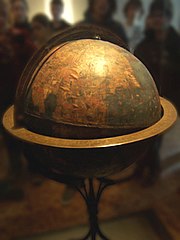






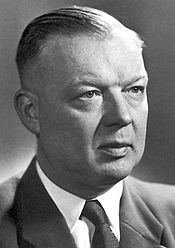

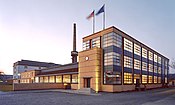

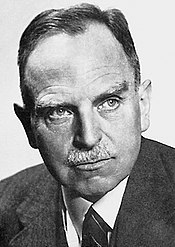

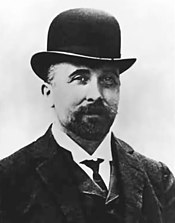





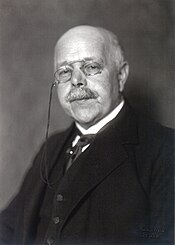








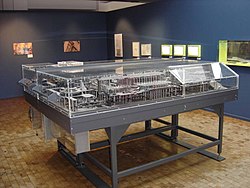
You left out Immanuel Kant and Eugen During.
Many is famous for his Copernican Revolution of metaphysics, where the object of experience is an appearance which conforms to various innate properties of the mind.
Duhring created an understanding of the Jews based on their race or inherited mind, as opposed to the previous Christian conception of the Jew as a person with a different religion.
Sehr geehrter Herr de Nugent: Herzlichen Glückwunsch zum Geburtstag!
Vielen Dank. Mit 70 habe ich beschlossen, dass die Zeit genügend reif ist, um den großen Wurf zu wagen.
Das kommt aber daher, dass ich jahrelang Unterstützer wie gerade Sie, alter Kämpfer, gerade Sie, im Rücken wusste.
Was hätte es gebracht es, vorzeitig zur Schlacht auszurufen?
Aber nun geht endlich die Todesangst um, und gerade diese war nötig und ist da.
– Nachricht aus dem Politikversagen vom heutigen Tage –
Bundesinnenminister Faeser verbietet COMPACT
Nancy Faeser (SPD) hat das Verbot des COMPACT-Magazins angeordnet. In diesen Minuten werden die Redaktionsräume sowie die Wohnungen der Mitarbeiter durchsucht. Das Ministerium würde damit gegen die geistigen Brandstifter vorgehen, die „ein Klima von Hass und Gewalt gegenüber Geflüchteten und Migranten schüren“, sagt Faeser. „Wir lassen nicht zu, dass ethnisch definiert wird, wer zu Deutschland gehört und wer nicht.“
Seine Funktion als „zentraler Vernetzungsakteur zwischen der Neuen Rechten und dem rechtsextremistischen Parteienspektrum“, so der Verfassungsschutz, behielt COMPACT somit. Zuletzt kooperierte COMPACT auch mit den rechtsextremen „Freien Sachsen“. Vor allem aber wurde die Unterstützung für die AfD vorangetrieben, etwa mit dem Start einer Veranstaltungsreihe mit dem Namen „Die blaue Welle“ – einer recht unverhohlenen Wahlkampfaktion für die AfD. Auch das Logo der „Blauen Welle“ wurde am Dienstag verboten.
.
Weiterlesen auf WELT, und zwar:
https://www.welt.de/politik/deutschland/article252540734/Compact-Innenministerium-verbietet-rechtsextremes-Magazin.html
Wow, das ist allerhand. Ich habe den ehemaligen Linken Elsässer gerne gehabt.
“Deutschlandfahnen hängen in Vorgärten und an Autospiegeln.” — schlimmer geht’s ja gar nicht. 😉 Gefahr im Verzug!
Nach zwei Video-Interviews ist das Vorgehen der Faeser rechtlich sehr bekenklich, also ein Ergebnis einer Gefühlswallung der zartbolschewistischen “Frau”.
– Nachtrag zu meinem vorherigen Beitrag –
Benjamin Disraeli sagt – und stellt völlig richtig zeitlos fest:
”
Die Rassenfrage ist der Schlüssel zur Weltgeschichte.
Niemand darf das Rassenprinzip, die Rassenfrage gleichgültig behandeln.
Nur deshalb ist die Weltgeschichte so konfus, weil sie von Leuten geschrieben worden ist, die die Rassenfrage nicht kannten und ebensowenig die dazu gehörenden Momente.
Sprache und Religion formen keine Rasse – es gibt nur eine Sache, die eine Rasse formt: das Blut.
”
Quellenangabe:
https://de.metapedia.org/wiki/Disraeli,_Benjamin
(Auszug)
Benjamin Disraeli (21. Dezember 1804 in London; 19. April 1881 in Mayfair), seit 1876 1. Earl of Beaconsfield, war ein jüdischer Romanschriftsteller und zweifach Premierminister, sowie einmal Schatzkanzler Großbritanniens.
.
Portrait von Benjamin Disraeli:
https://de.metapedia.org/wiki/Disraeli,_Benjamin#/media/Datei%3ABenjamin_disraeli.jpg
Sehr geehrter Herr de Nugent,
hier sei ein kurzes Interview eingestellt, daß Herr Elsässer (Chef von COMPACT, das als GmbH/Gesellschaft mit beschränkter Haftung firmiert) bereits vor Ort der Hausdurchsuchung der Firmenzentrale gibt. Es sind etwa 50 Polizeibeamte zugegen, seit rund 4 Stunden darf Herr Elsässer weder telefonieren noch allein auf die Toilette gehen. Sämtliches Firmenvermögen wurde – wie etwa bei Sachwerten (Auto, Computer, Mobiliar und so weiter) und Kapital (Bargelder in Firmenkassen, Gelder auf Firmenkonten) – nicht etwa eingefroren, sondern verstaatlicht, das heißt die BRD, Bundesrepublik Deutschland, vertreten durch die Bundesregierung, hat das Firmenvermögen von COMPACT in seinen laufenden Haushalt überführt; mittels unter anderem Diäten läßt sich Bundesinnenminister Faeser letztlich mindestens teilweise das Firmenvermögen von COMPACT auf ihre privaten Konten transferieren.
Das erkenne ich als Bolschewismus, wenn auch im modernen Gewande daherkommed, was heißt: ensprechend mit der Technik unserer Zeit.
–
Compact Magazin verboten – Interview mit Jürgen Elsässer
https://m.youtube.com/watch?time_continue=1&v=wnRJwgkIrTA&embeds_referring_euri=https%3A%2F%2Fvitzlisneuer.wordpress.com%2F&source_ve_path=MTM5MTE3LDM2ODQyLDEzOTExNywyODIzOSwyODIzOSwyODIzOSwyODIzOSwyODIzOSwxMzkxMTcsMzY4NDIsMzY4NDIsMjM4NTE
– Nachtrag zu meinem vorherigen Beitrag –
Der Blogger Hadmut Danisch bringt die Sache auf den Punkt – eine umfangreiche Analyse der Geschehnisse hinsichtlich des Verbots von COMPACT:
.
Nancy Faeser verbietet COMPACT
https://www.danisch.de/blog/2024/07/16/nancy-faeser-verbietet-compact/#more-64609
.
Der Schlußsatz von Herrn Danisch lautet trefflich wie folgt:
Die eigentliche Frage ist aber nicht, ob das Verbot gegen COMPACT zu halten ist. Die Frage ist, wie jemand wie Faeces mit einer solchen Auffassung von Verfassung und Grundrechten jemals Bundesinnenminister werden und andere als verfassungsfeindlich beschimpfen konnte.
Danke.
Die ganze Sache ist entsetzlich und ein Schlag gegen die Kampfmoral.
Man bringt in diversen Zeitungen gleichzeitig die Nachricht vom Compact-Verbot (wegen “Hetze” gegen die armen, schafsfrommen “Flüchtlinge”) und ein halbes Dutzend furchtbare Ausländerverbrechen gegen Einheimische.
Es ist kein Wunder wenn Aliens nur ihren eigenen Aktivitäten nachgehen und uns Erdlinge zu 99% meiden.
Danke.
Auch Putin, den ich seit 2005 lobe, schätze und bewundere, kann über den eigenen russischen Schatten nicht springen.
Und man bedenke, dass wir Deutsche, und vor allem ich, dumm als Eroberer, nicht klug (und gerecht) als Befreier, einmarschierten, und dass Putins älterer Bruder bei der Belagerung von Leningrad/Sankt Petersburg, 1943 zu Tode verhungerte.